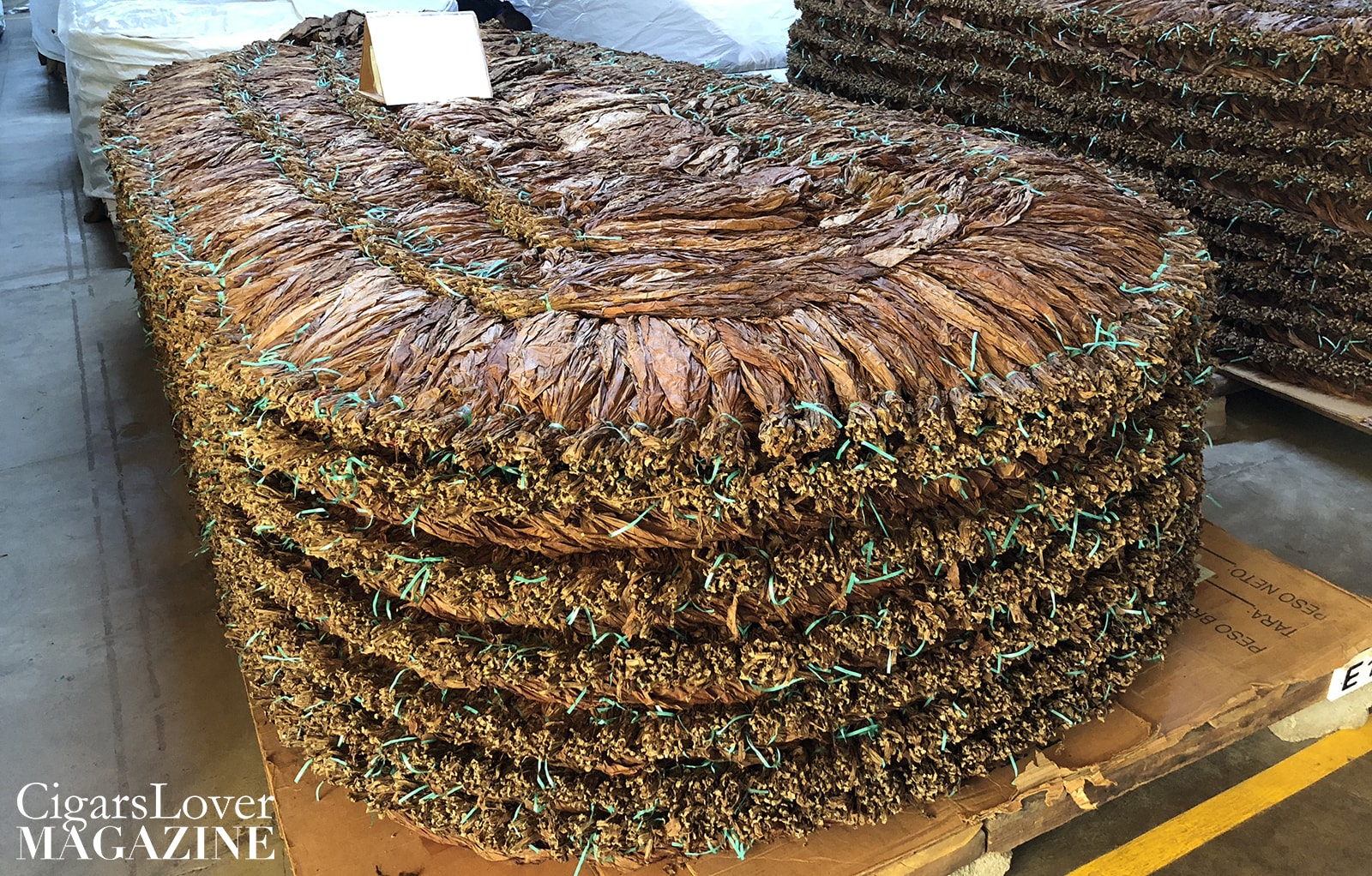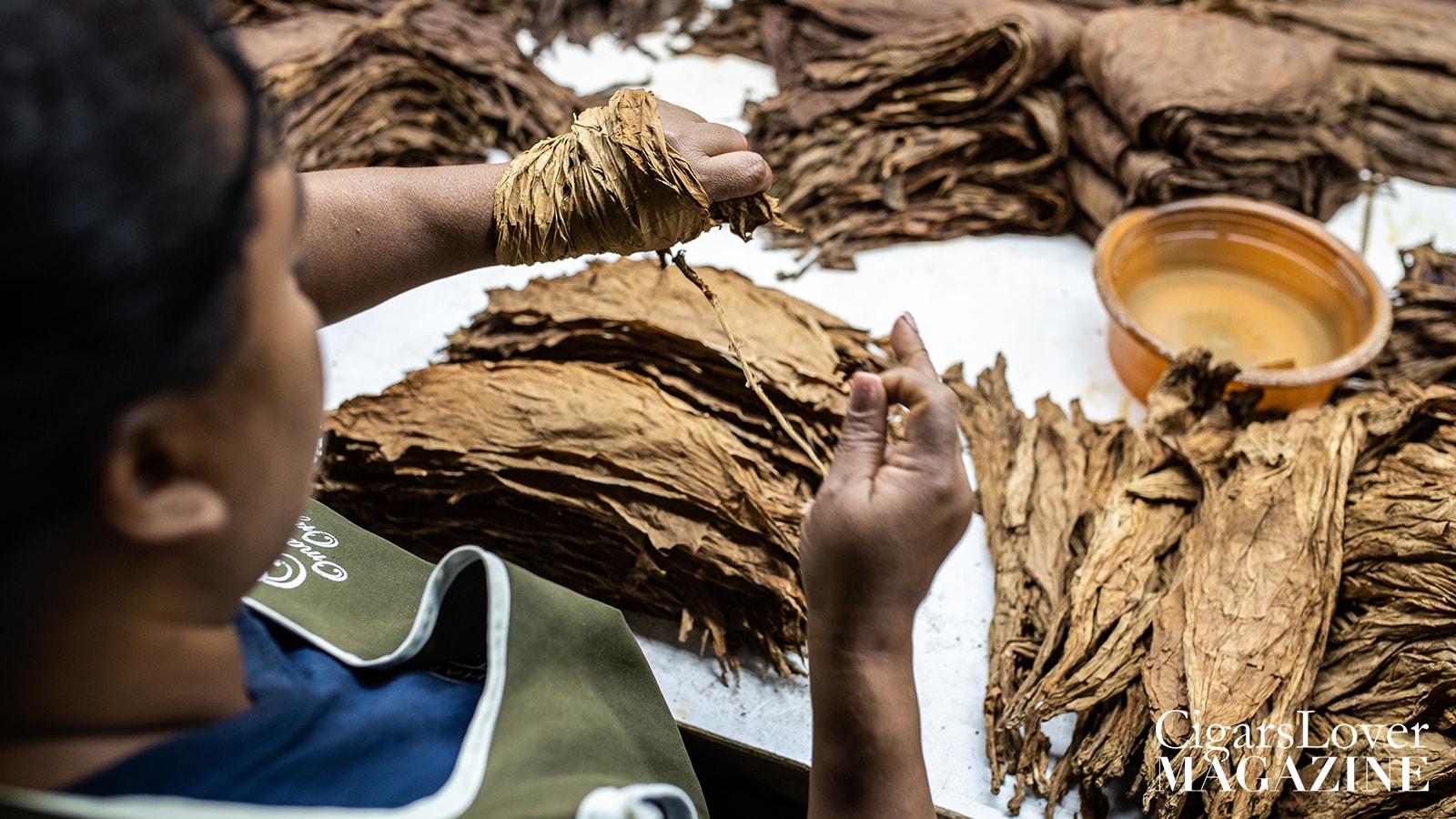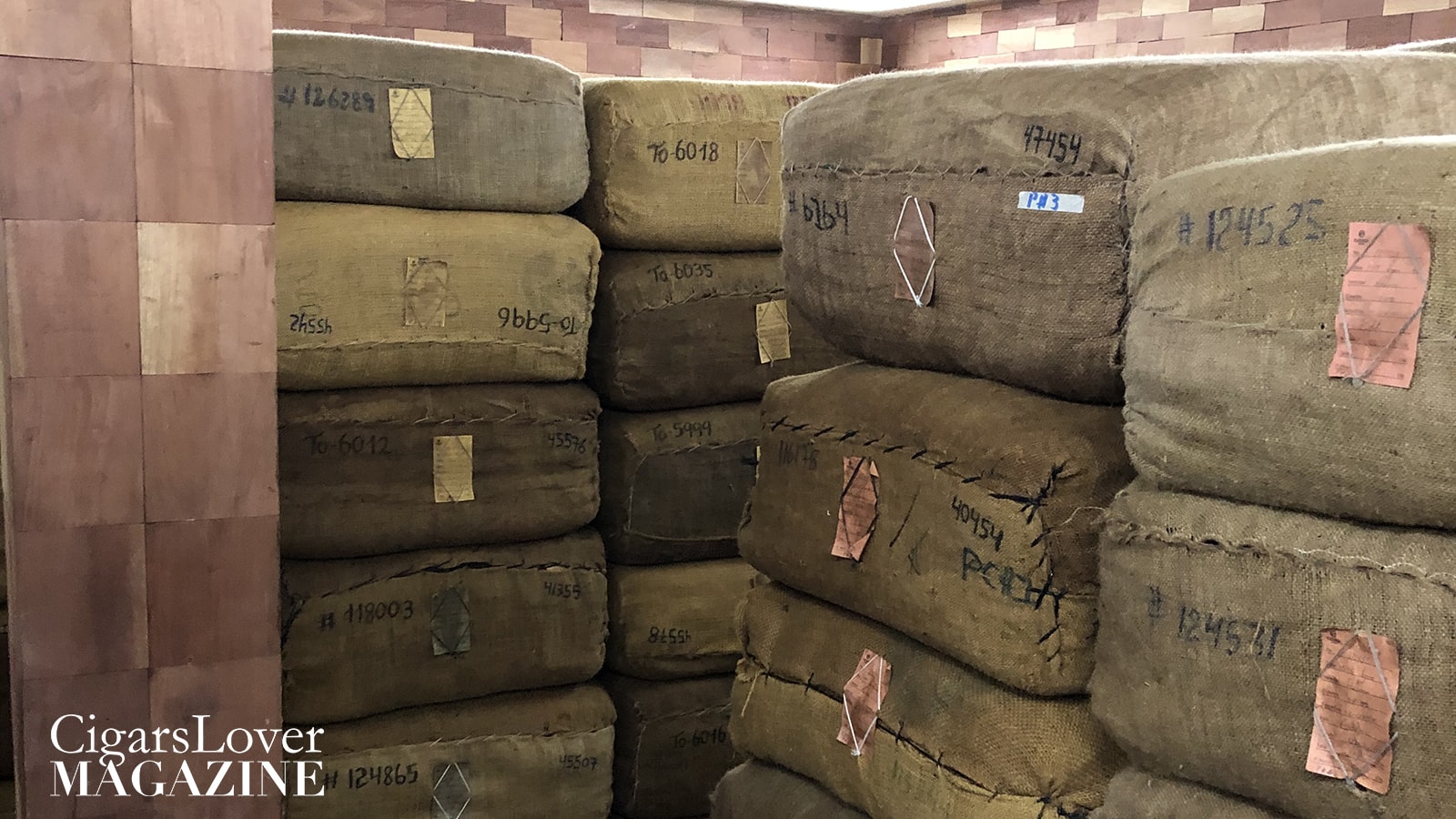The first fermentation is generated by the residual humidity contained in the leaves, by the heat generated from mutual contact and by the ambient temperature; all this creates the conditions for the action of fungus and bacteria. The leaves collected from the upper levels of the plants, being larger and richer in oils, need a longer fermentation period; this phase can last up to 30 days, a period in which maximum attention is paid to the “pilones” (pictured below) since it is a decisive phase in defining the characteristic features of the puros; if the temperature of the leaves exceeds 95°F (35°C), it is necessary to undo the pilon and let the leaves breath by shaking them, before recreating the pilon.

The first fermentation phase results in softer and more flavorful leaves, but they are also more fragile and dry.
The next step, after an appropriate humidification, consists in selecting and dividing the leaves based on length, thickness, color, structural composition, elasticity and central vein. Many other characteristics can help to classify the leaves. Once the selection has been made, the leaves follow a rest period.
At this point of the processing, the leaves for the wrapper are ready to be packaged in the “tercios”, packages covered with palm leaves, in which the leaves age. The leaves destined for filler and binder, on the other hand, continue on their path facing the “despalio” phase. The “despalio” consists in separating the leaf from the central vein dividing them. The leaves arrive at this stage after being humidified with water.

The “despalio” operation is performed by the “despalilladores” through a rapid rotary movement of the wrist. At this point, another sorting of the leaves is carried out, discarding those compromised by the previous processes and pressing the others with the help of boards. For these leaves, a further fermentation is required, which can last from 50 days for the seco leaves and up to 90 days for the ligero leaves.
Fermentation takes place in large stacks, called “burros”, whose internal temperature is controlled by the introduction of long sword-shaped thermometers. Inside a “burros”, the temperatures can reach 50 ° C.
After the second fermentation, the leaves destined for the filler and the binder are placed on grids (parilleros) to facilitate the drying by ventilation. After a few days the leaves are shipped to the warehouse where, together with the leaves destined for the wrapper, they finish their aging process. The thicker ligero leaves, which give the cigar structure and strength, undergo a longer aging period, while for lighter leaves the aging period is shorter. The filler and binder leaves are stored in containers called pacas (jute bags). The leaves for the wrrapper are packaged in the aforementioned tercios.

The wrapper leaves, whose aging had started after the first fermentation, are extracted from the tercios and separated from each other. Then the “gavillas”, containing about 40 leaves, are humidified with water, to re-give the leaves elasticity and proceed with the stripping.
At this point, the leaves are hung to promote uniform moisture absorption. Once dry, the stripping is carried out and the half leaves pass to a sorting and classification phase based on size, color and structure. The lots of leaves are then formed, from which the torcedors will take the leaves needed for the construction of the cigar. The leaves for filler and binder are taken from the “pacas” and, following a careful review, placed in wooden barrels and stored until the time of processing. An excessive humidity rate will be preventively treated through ventilation. On each “paca”, or “tercios”, the characteristics of the leaves contained are indicated, from the typology, to the harvest year, from the measures, to the shape, so as to encourage the work of creating the “liga” (blend) in the “barajitas” (departments of the factories in which the secret blends are created, which will end up on the tables of the torcedores).



